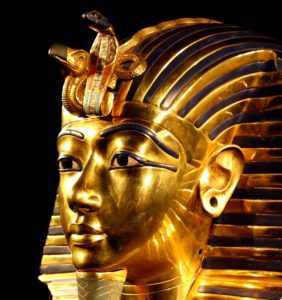Ankh cross necklaces have been out there in different forms and styles for a while now. It might have taken some time for them to get into the limelight like they have today, but they have had a … Continue Reading about Ankh Cross History
Egyptian Jewelry
Welcome to Only Egyptian
Contact Us
Egyptian Jewelry
Hello there! We are Only Egyptian, a small company with a dedication to Egyptian jewelry and history. We encourage you to drop us a line with any questions, comments, or just to say hi
Browse through our site to learn the fascinating history surround Egyptian jewelry and be prepared to learn about these ancient gods and their adornments!
Egyptian Jewelry
It’s been a huge number of years since the straightforward adorned pieces of Egyptian jewelry were made from seashells, bone, and creature skin.
In the years since our progenitors previously left the African mainland, Egypt has turned into a prevailing developer of jewelry in antiquated history.
Recent Posts

Ankh Cross History
The old Egyptians esteemed individual decoration profoundly and Egyptian gems were worn by ladies and men, and every single social class. Their statues of divine beings and lords were decked with luxurious gems. The perished were enhanced with gems for their send off into eternity. A wide range of Egyptian jewelry is famous, including armlets, studs, neckline pieces, anklets, armbands, and rings.
Brilliant gems turned into a grown-up toy in pre-dynastic Egypt. It was an image of intensity, religion, and status. It empowered it to before a more prominent concentration for groups of honorability, and royals. This made a bigger interest for expound pieces.
Notwithstanding gold and materials ordinarily found all through Egypt, different materials were imported. The favored material for the Egyptian Scarab was Lapis Lazuli, a semi-valuable stone.
High grade Egyptian adornments was a significantly wanted item in the antiquated world. Their craftsmanship was found crosswise over regions including Turkey, Rome, antiquated Persia, and Greece.
The Egyptians honorability favored wrist trinkets, accessories, special necklaces, pendants, belts, and hair dabs. They adored pieces that had been planned with parchments, tigers, scarab bugs, winged flying creatures, jackals, elands, and tigers. One of the more intriguing materials that was generally utilized is colored glass. It was first found in Egypt and upon its underlying disclosure it was extraordinarily costly because of its irregularity. Colored glass can be found in Egyptian adornments delineating winged animals.
The nobles wore their costly adornments in death also, and this custom of tying it down in hard to arrive at spots has enabled archeologists to find huge amounts of this riches, flawlessly protected.
Egyptian Gold Jewelry
The prevalent materials used to make Egyptian gems were gold and copper. The majority could bear the cost of the copper, with the honorability settling on gold. Both were mined in Nubian deserts and in rich supply. Silver is in all respects seldom revealed in unearthings through Egypt. The utilization of it was because of its importation, as silver wasn't accessible in ancient Egypt. Jewelers would utilize gold that came in shades of dim, to rosy dark colored, and rose. The shading variety was because of the blending of components, for example, copper, iron, or silver into the gold.
Diamonds And Stones
The more luxurious bits of Egyptian gems were trimmed with semiprecious stones and different diamonds. The most prized stones were, as referenced above, lapis lazuli, just as obsidian, garnet, shake gem, and carnelian. Pearls and emeralds were the most regularly uses stones local to Egypt. In spite of the fact that, faience was likewise utilized regularly. This was produced using ground quartz and after that blended with a colorant that was warmed and after that formed to imitate progressively common and costly stones. The most prominent of which was a blue-green shade made to emulate turquoise.
Kinds Of Adornments
Maybe the most famous trimming from antiquated Egypt is the wide neckline neckband. It was commonly made of beaded columns and formed like blossoms or creatures. The neckline was extended over the wearer from bosom to collarbone. It was additionally basic for pendants to be hung on beaded pieces of jewelry, bearing a talisman of insurance. The two people wore studs, and rings were likewise mainstream for people.
Protective Amulets
Amulet necklaces could be worn as free pieces, however they were frequently melded into Egyptian adornments. These protetivel necklaces were charms or charms that were accepted to inject the wearer with power. The special necklaces were cut into different shapes and structures, including images, people, creatures, and divine beings. Moreover, the protective necklaces were viewed as similarly noteworthy defenders of the living and the dead. Ornaments were made explicitly for life following death, as dedication adornments was standard for old Egypt.
Archeologists have learned information about the way of life through exhuming tombs. Among the ancient rarities were regular articles, just as gems. Their dress was generally plain, anyway Egyptian gems was amazingly fancy. Each antiquated Egyptian possessed gems, paying little heed to sex or class. The decorations included heart scarabs, four leaf clovers, wrist trinkets, beaded accessories, and rings. For respectable Egyptians, similar to rulers and pharaohs, the Egyptian gems was produced using valuable metals, minerals, jewels, and shaded glass. While others wore, gems produced using rocks, bones, dirt, creature teeth, and shells.
Heart Scarabs
Heart scarabs were basic kinds of funerary special necklaces. They were once in a while heart-formed, be that as it may, for the most part insect or oval molded. They got their name in light of the fact that the special necklace was put over the heart before entombment. The conviction was that it balanced the heart's detachment from the body in existence in the wake of death. The heart chronicled an individual's activities through life, as per Egyptian folklore. In death, the dead would meet the god Anubis, who might perform judgment in the Weighing of the Heart Service.
Beaded Egyptian Jewelry
Beaded pieces of jewelry were likewise well known among Egyptian adornments. These pieces of jewelry frequently highlighted special necklaces and charms, and were produced using shifting sizes and states of dabs. The dots were produced using minerals, semi-valuable stones, dirt, and glass.
Profound Significance
Egyptians were profound devotees to adornments' otherworldly criticalness. It was worn to avert shrewdness spirits, secure their wellbeing, just as bring good karma. Certain hues, plans, and materials were related with extraordinary forces and divinities. Carnelian, for instance, is an orange-red stone which was suggestive of blood-this imbued a trimming with intensity and vitality. Egyptian gem dealers pursued severe principles in regards to the magical parts of their adornments manifestations.
